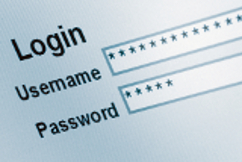|
|
How to Google Like a Pro

You think you’re already a Google pro, right? After all, you’ve been using the massively popular search engine for years.
What more can there be to learn?
A lot, as it turns out.
The website How-To Geek and The Atlantic Monthly each recently ran stories highlighting ways in which you can better search the Internet with Google. If you want to find the right information and you want to find it quickly, you’d do well to follow some of these tips.
Operators are key
As the How-To Geek site explains, operators are the keys when you’re trying to find specific information with a Google search. Think of operators as being the opposite of overly generic search terms.
The How-To Geek site uses an example a Google user who wants to uncover New York Times stories about test scores in college from 2008 to 2010. This same user, though, doesn’t want to access SAT scores. Sounds like a tough task, but with operators, it isn’t.
First, if the user inserts the operator “site:” in front of the words “nytimes.com,” that user will only pull up results from the New York Times. The user can then add quotation marks around the words “test scores” to search for that exact phrase, not each of the words separately. If the user inserts the “-” operator in front of the word “SATs,” the user will eliminate the term “SATs” from the search. The user can then add 2008..2010 to show all results from a given time range. The “..” operator performs this nifty trick.
Google Scholar
The How-To Geek site also recommends Google Scholar. This specific Google search only searches academic and scholarly work. If you want to, as the How-To Geek site shows, find papers focusing on photosynthesis and written by Dr. Ronald Green, you run a search that includes the operator “author:” in front of “green” followed by the word “photosynthesis” in Google Scholar.
Control F
The Atlantic story highlights the “Control F” feature on Google search. This is a particularly helpful tool.
Say you’re searching Google for “Thanksgiving dinner” recipes, and you’re mostly interested in appetizers. After completing your “Thanksgiving dinner” search, hold your computer’s “Control” key and then hit “F.” Once you do, a small bar will appear on the top or bottom of your computer screen next to the word “Find.” You can then type in a specific word or phrase — such as “appetizer.” When you do, those words or phrases will be highlighted in your Google search results, helping you find those results that pertain exactly to what you are looking for.
Read more at …
Top ↑
|
Email Workflows You Should Use

The Hubspot blog recently asked an intriguing question of small-business owners: Are you using the contacts in your business’s database to generate more sales? Or are you letting these contacts sit dormant?
Too many business owners, unfortunately, are guilty of letting most of those contacts go to waste. The good news? Owners can change this by setting up automated email workflows, programs that send email messages from specific clients on specific topics to designated folders.
How they work
In other words, if a client sends you an email question about your landscaping company’s snow-removal services, an automated workflow program would automatically send that email to a folder designated solely for snow-removal issues.
This makes it easy for business owners to find specific email messages. And it also makes sure that owners don’t miss out on potential new business because an important email message has been lost among the hundreds in that owner’s inbox.
Email workflows
The Hubspot blog post, written by Pamela Vaughan, identifies several automated email workflows that your small business should be using.
Her number-one suggestion? Topic workflows.
Business owners should create a workflow for each of the industry-related topics they typically create content about, Vaughan writes. For instance, a pet shop that writes about organic pet food and well-being products for household pets could create an email workflow that sends email messages about these two key product offerings to their own specific folders.
Business owners can also set up an automated program to send messages from their more engaged clients to a special folder set up for top customers. For instance, maybe those customers who regularly call or email a business will have their messages sent to a specific folder. Maybe those who visit your business’s website regularly or follow your Twitter feed should have their messages routed to a specific folder.
Why it’s important
Why are automated email workflows so important? Because today your clients reach out to you in a number of ways. Some stop in your business. Others call. Many, many more visit your website, send messages, and follow your Twitter and Facebook posts.
You want to serve your clients quickly and efficiently. Making sure that messages from your high-engagement clients are routed to key folders will help you do this. It will also help you keep these important customers.
Read more at Hubspot: http://kbit.co/email-workflows
Top ↑
|
Creating the Best Passwords, Avoiding the Worst

Hackers are always going to be a potential problem for computer users, and there is really no such thing as a fail-proof password.
However, computer users can take steps to devise passwords that will give at least give hackers a run for their money. Think of it as arming your home with a burglar alarm: A skilled burglar can disable that alarm, but most burglars will follow the path of least resistance and simply move on to a house that isn’t protected.
Stronger passwords
The New York Times recently ran a story offering password advice from computer security pros. If you want to protect your personal information and valuable business data, you’d be wise to follow some of their tips.
And the first tip? Don’t use a password that can be found in a dictionary. Hackers can uncover these passwords fairly easily using readily available technology. What’s better is a passphrase. The longer this phrase, the more difficult it is to crack.
According to the Times story, a passphrase should be 14 characters or longer to make it uncrackable in less than 24 hours. A suggestion from the Times? Remember a favorite movie quote; then use just the first one or two letters from each word of that quote to form your passphrase.
The Times story also suggests that you never use the same password more than once. Some users will use the same password for their bank accounts that they use for their public library. It doesn’t matter so much if a hacker cracks the password you use to log into your public library. However, if that same password will let hackers gain access to your online bank account? That’s serious.
Bad passwords
The popular blog Kottke.org has some different advice when it comes to passwords. It lists some of the worst passwords still in use today—so you know exactly which ones to avoid!
For instance, many people still use the word “password” as a password. That’s extremely risky. So is using “123456” or “12345678,” which also made it into Kottke’s Password Hall of Shame.
Other bad passwords on this list? How about “qwerty” or “letmein.”
Yes, people do use these passwords.
Protecting yourself
The New York Times story does contain one rather grim nugget: the odds are good that most computer users will get hacked at some time. As the story says, it just takes opening one suspicious email message or clicking on one infected hyperlink.
The good news? With just a bit of creativity when it comes to creating passwords, users can at least increase the odds that hackers will at least struggle, and maybe give up, on hacking into their most important sites.
Read more at …
Top ↑
|
Get Ready for Holograms!

Remember when tablet computers seemed like the stuff of science fiction? Or how about smart phones? There was a time when phones that allowed you to surf the Web and send e-mail messages seemed like the technology of the future.
Now these are the technologies of the present. So what’s next? Ben Kunz, a writer for Bloomberg Businessweek, has his own prediction: holograms.
Apple and holograms
Kunz predicts that Apple devices—its iPhones and iPads—will soon display holograms that look like something you’d see in a contemporary science fiction film. In fact, Kunz’s story on Bloomberg Businessweek is accompanied by a photo of Robert Downey Jr. from the 2012 hit movie The Avengers using his own nifty holograms.
Again, this may sound like the stuff of fiction, but Kunz writes that he’s basing his prediction on real news: Apple’s patents and recent acquisitions.
Then there’s the competition in the tablet industry. Apple needs something to help set it apart from its tablet competitors. Holograms might be that thing.
Apple’s plans
According to Kunz’s story, Apple’s hologram idea includes matching a forward-facing camera and sensor that tracks the location of viewers’ eyes with a screen that can create beams of light at various angles.
With this technology, each viewer’s eyes would receive a different angle of the image. This would create realistic-looking holograms.
The future of 3D?
Of course, Kunz addresses the biggest issue with 3D holograms: 3D technology has so far failed to capture the imagination of consumers. Kunz writes that the sale of 3D TV sets have been sluggish. Even games like Nintendo’s 3DS handheld system, which don’t require players to wear 3D glasses, have seen lukewarm sales.
So why would Apple invest heavily in the technology to create holograms?
Kunz writes that Apple has a history of taking failed ideas and making them succeed. This goes all the way back to the days when Apple took the idea for the mouse from Xerox, made it more efficient, and saw sales soar. Apple also debuted its iPhone and iPad devices long after Microsoft first tried to introduce a pen-based tablet PC that never quite caught on.
Kunz also argues that Apple’s 3D holograms will be different. They’ll be far more realistic, and they won’t require users to wear 3D glasses to view them.
The message here? Get ready for holograms. Once Apple’s programmers get to work on a technology, they rarely misfire.
Read more at Businessweek: http://kbit.co/holograms
Top ↑
|
Computers Are Getting Dangerously Complex

Peter Neumann, a computer scientist at SRI International, once had breakfast with Albert Einstein.
And, according to a profile piece in The New York Times, Neumann learned something important during his meal: Everything should be made as simple as possible, but no simpler.
Unfortunately, Neumann’s computer-industry peers have not followed that wise advice.
Complex problems
As the Times profile says, Neumann has frequently criticized the computer industry for repeating its mistakes. Mainly, the industry makes products that are overly complex. And by doing this, it sets itself up for problems that are equally complex.
Neumann’s worry? Because hardware and software today are so complex, it has become nearly impossible to identify the flaws and vulnerabilities in computer systems. This means that is equally as challenging to plug potential security holes.
Starting over
Neumann, though, isn’t just lecturing his fellow industry pros about the security flaws in modern hardware and software. He’s now actively involved in redesigning computers and software from what The New York Times calls a “clean slate.”
The Pentagon’s Defense Advanced Research Projects Agency, better known as DARPA, is funding a five-year project designed to boost the security of computers and networks. Neumann is leading the research team completing the project.
According to the Times story, Neumann is operating under the assumption that the only way to solve the computing industry’s security crisis is to study the last 50 years worth of research, take the best ideas from it, and build something new.
Clean Slate effort
Neumann’s effort is now as the Clean Slate project, and it’s attracting the attention of security officials. The Times story quotes Richard Clarke, the former counterterrorism czar of the United States, as saying that the Clean Slate effort is “essential.”
What will Neumann’s efforts turn up? It’s far too early to predict, but the hope is that it will lead to a safer computing experience, one that will increase the security for both big and little computer users.
Read more at The New York Times: http://kbit.co/rethinking-the-computer
Top ↑
|
|

Leave a Reply
Want to join the discussion?Feel free to contribute!